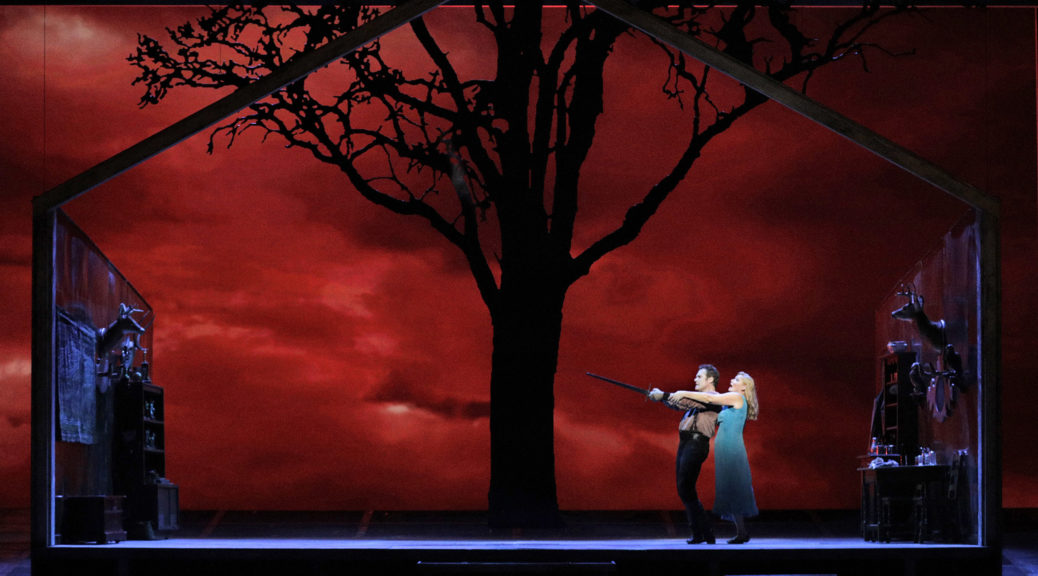
VALKYRIES GALORE, ‘CHUTING OUT OF THE SKY
Of the four Wagner “Ring” operas, “The Valkyrie” (Die Walküre) the one with the Valkyries is the most popular and most played. Not because all those fetching female deities come tumbling out of the sky, but because it has very compelling love scenes, both sexual and familial. I mean, those evil sorcerers and gods and giants and dragons and dwarves running wild in the other operas can only take you so far. They’re stunning, but with emotional limitations.
In addition it’s the most melodious of these works, whether “The Ride of the Valkyries” (including the women’s voices deleted in most recordings), Siegmund’s romantic “Winter Storms” aria and “Wotan’s Farewell,” his 20-minute-long touching, loving adieu to his daughter.
Remember the gods Wotan and Fricka, him lounging about a 20th-century suburbia in riding boots and jodhpurs in the opening opera’s updated setting? In “The Valkyrie,” it’s a 1930s American country farm house, with the villain Hunding manipulating his rifles and swilling out of a beer bottle. It’s Director Francesca Zambello’s way of saying, this is no myth in antiquity, these are dramas, emotions and reactions pertinent to the modern day. And to make her point, the protagonists have to act—no more stand-and-sing!
There’s even an ingenious Amelia-Earhart touch, with the eight valkyries as parachutists descending dramatically from the heavens.
This works. And, like the other “Ring” offerings, both drama and music are riveting. You are swept along by the leads (Siegmund, Sieglinde) become a love couple, a pair of twins caught up in an incestuous relationship. (A lesser composer would never have gotten away with this, nor having 11 of the 14 cast members Wotan’s illegitimate offspring from a variety of liaisons.)
Wotan magically helps them escape the captivity net of the violent brute Hunding. Fricka hounds Wotan for allowing this transgression to decency, and he backs down. His daughter Brünnhilde, the top valkyrie, is so moved by compassion that she countermands orders and lets her escape and bear her child Siegfried. That incurs Wotan’s wrath, mollified in the tender father-daughter exchange of endearments, matching some of Verdi’s finest scenes.
Of note here, in addition to Greer Grimsley’s Wotan, are the svelte and dashing Brünnhilde of Iréne Theorin, the Fricka of Jamie Barton, the Siegmund of Brandon Jovanovich and the Hunding of Raymond Aceto. As Sieglinde, the veteran and mobile soprano Karita Mattila could still produce a few ringing high notes.
NOTES—Zambello’s “Ring” cycle was first given here in 2011. It was then taken back to her home base at Washington Opera, where the great 70-ish Placido Domingo, in one of his last tenor roles before moving on to baritone, played Siegmund with distinction.
Wagner’s “Die Walküre,” 2nd of the 4 RING cycle operas, at S.F. Opera, heard June 20, playing through June 27. In German. For info: (415) 864-3330, or go online.